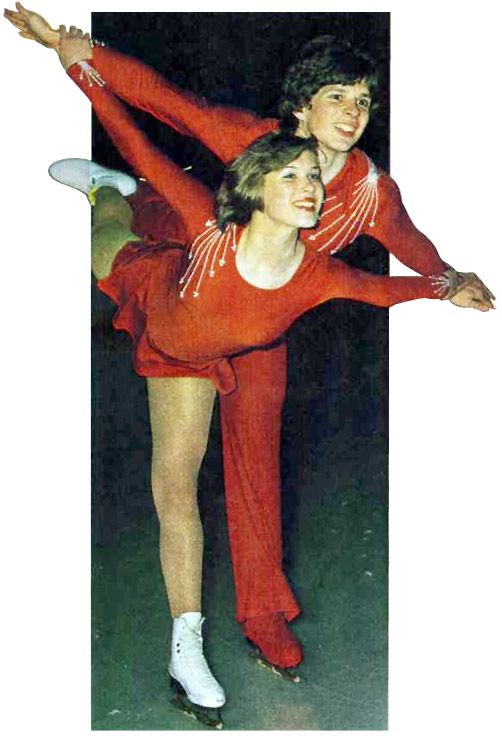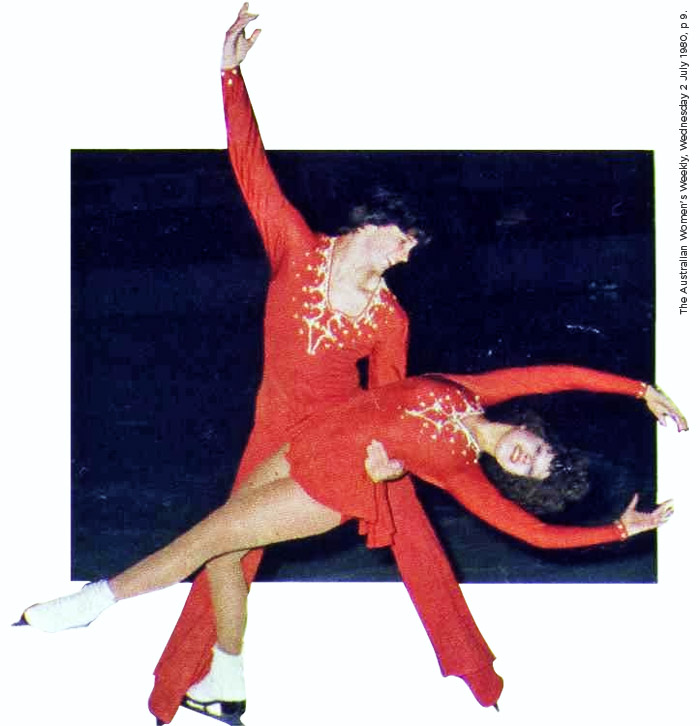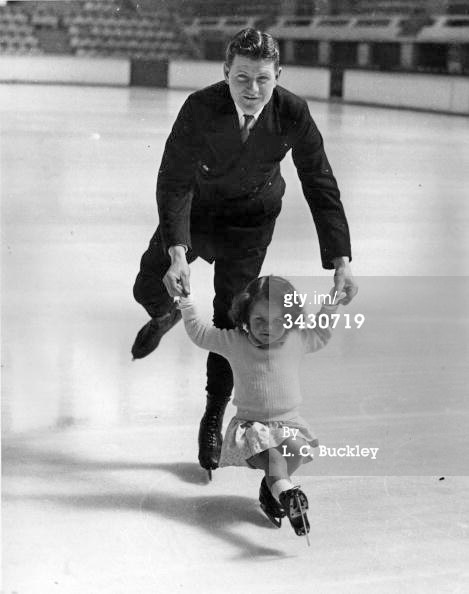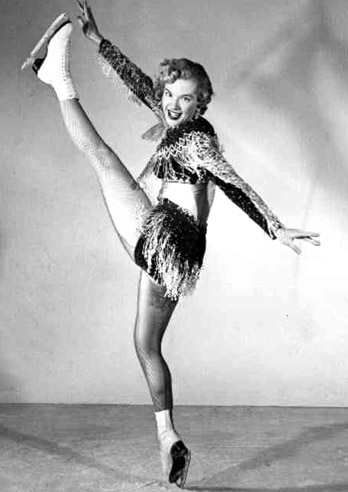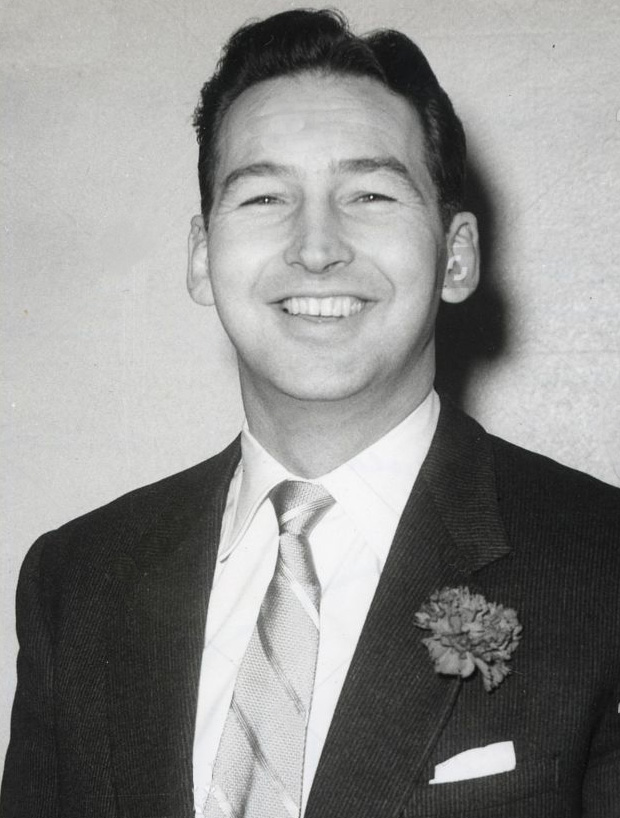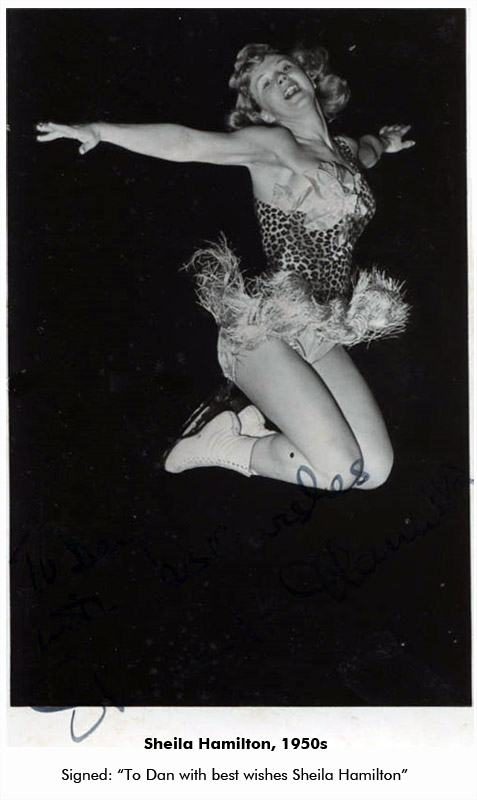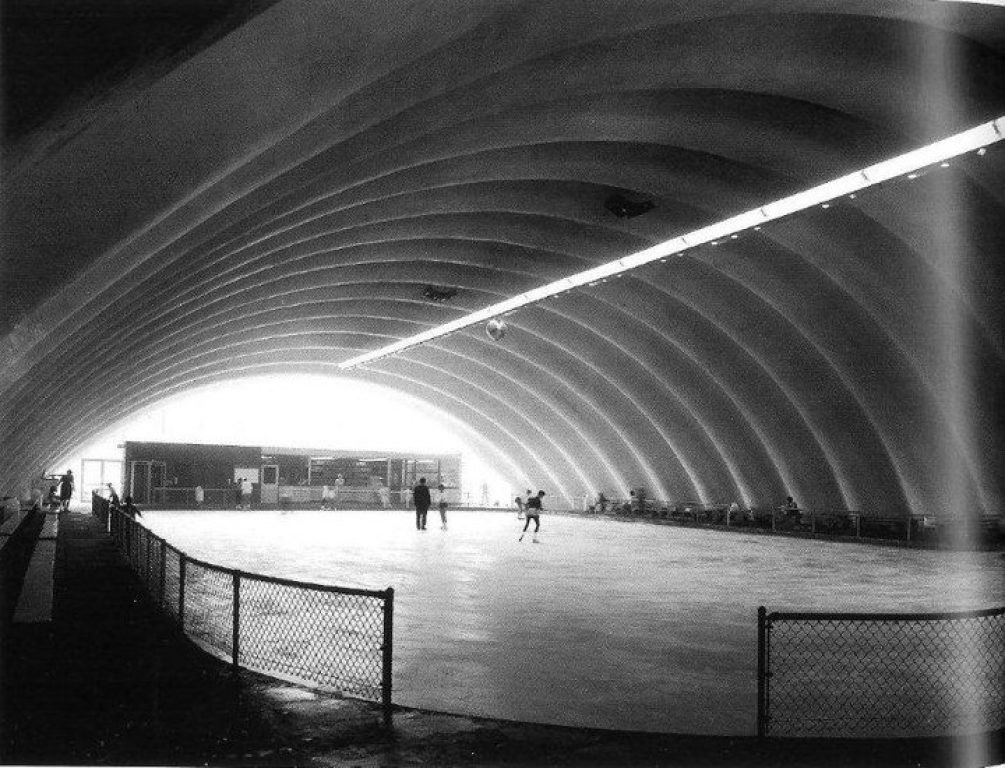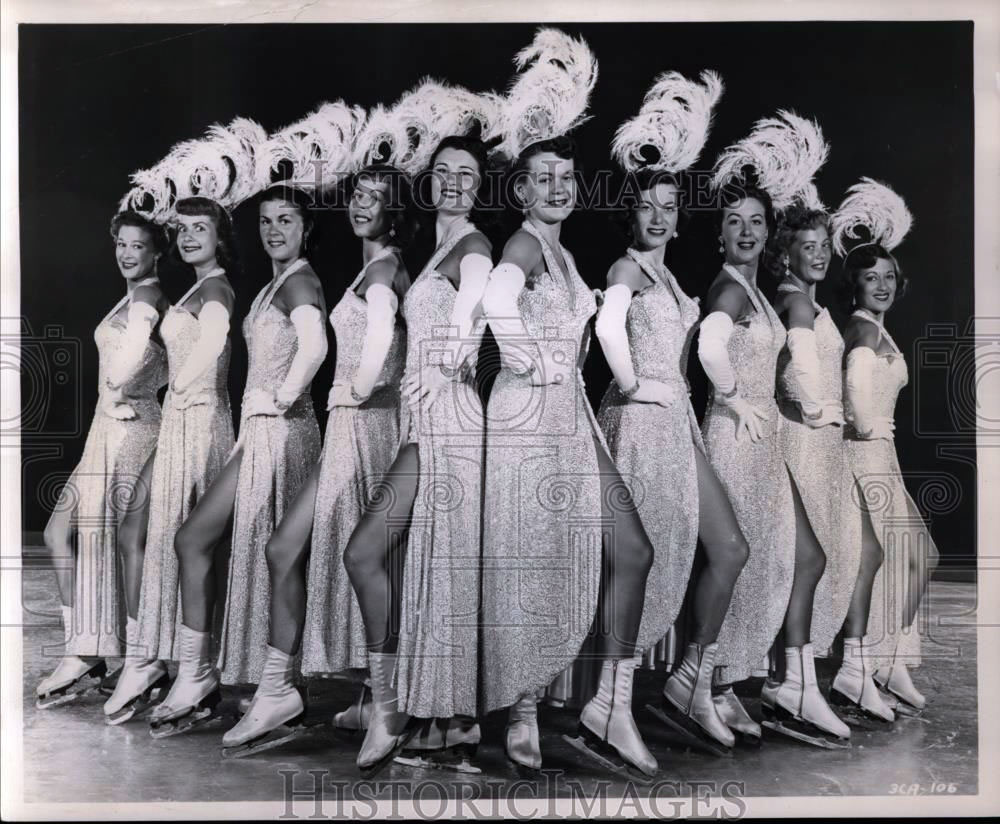Legends
home
- BUILDERS | 2 | 3 | 4 | 5
- BUILDERS 6 |
- NISC
- MIA STRATEGY
- MIA CONCEPT
- MIA ECONOMICS
1936 1st AUSTRALIAN Winter Olympian
1947 1st International Figure Skating GOLD Medallist
1960 1st Australian Olympic and World Championship ICE HOCKEY Teams Squaw Valley California USA
1961-2 2nd AUSTRALIAN Ice Hockey World Championship Ice Hockey Team Colorado USA
1963-4 2nd OLYMPIC Qualification ICE HOCKEY Team Tokyo Japan
1987 1st International Ice Hockey MEDAL Perth Australia
2008 Ice hockey World Championship PROMOTION TO DIVISION I Newcastle Australia
![]() From this time onward the art of ice-skating will have to be added to the now almost complete list of world's sports in which Australians are likely to achieve distinction. As the result of long years of practice, and after conferences between the best exponents in the world, the International Skating Union in 1896 established a rigid series of tests in what are known as the school figures, mastery of which entitles the executant to possession of a bronze, silver, or gold medal, according as he or she can pass the third, second, and first class satisfactorily. It is only some four or five years since Australians have had the advantage of learning this most difficult of arts, but the artificial ice-rinks first established as a monetary speculation are rapidly becoming a school of skating more in the nature of a club. In this short time Victorians have shown their adaptability to any form of acclimatised sport by the attainment of an extraordinary proficiency at ice-skating. Three men in Dunbar Poole, Ramsey Salmon, and Langley, the last named now the professor at the Melbourne Glaciarium, are devoting all their time to the art, and have already earned distinction upon English and Continental rinks, Poole and Salmon, going abroad every winter for further study under the best exponents.
From this time onward the art of ice-skating will have to be added to the now almost complete list of world's sports in which Australians are likely to achieve distinction. As the result of long years of practice, and after conferences between the best exponents in the world, the International Skating Union in 1896 established a rigid series of tests in what are known as the school figures, mastery of which entitles the executant to possession of a bronze, silver, or gold medal, according as he or she can pass the third, second, and first class satisfactorily. It is only some four or five years since Australians have had the advantage of learning this most difficult of arts, but the artificial ice-rinks first established as a monetary speculation are rapidly becoming a school of skating more in the nature of a club. In this short time Victorians have shown their adaptability to any form of acclimatised sport by the attainment of an extraordinary proficiency at ice-skating. Three men in Dunbar Poole, Ramsey Salmon, and Langley, the last named now the professor at the Melbourne Glaciarium, are devoting all their time to the art, and have already earned distinction upon English and Continental rinks, Poole and Salmon, going abroad every winter for further study under the best exponents.
At the instance of the Victorian amateurs a National Ice-skating Association of Australia was formed this year, with a view to the establishment of properly constituted class tests, and future affiliation with the International Union. Bronze medal tests have just been concluded, and six men succeeded in passing the test, though the compulsory figures set were over-ambitious, including, as they did, "loops" and "double threes," which are elsewhere reserved for the second-class tests. Nothing is to be gained by going beyond the difficulty of the established tests, nor is such a practice likely to pave the way to affiliation with the International Union. In addition to the bronze medal competitions, championship tests were held consisting of a series set school figures and three minutes of free skating, also the waltzing and pair-edge events of other years were continued.
To comment generally upon the form displayed, both in the school figures and in the free skating programmes, the outstanding feature was the want of style rather than the want of ability to trace more or less correctly the figure on the ice. Want of freedom and lack of proper carriage and poise are chiefly responsible for cramped figures. All through the figures were skated too small, and without sufficient pace, the "abandon" of the true Continental style was conspicuous by its absence. To put it in a word, the style was a compromise between the English or "poker" 'school, as it is familiarly known, and something which is far from reaching the most modest Continental style...The free skating programmes submitted could hardly be called free skating, except in two instances combinations of simple school figures are not free skating. Notable exceptions were Miss Williams's exhibition in the ladies' Championship, and those of K. Field and J. Goodall in the men's event, though the latter depended far too much on minute variations of dance and toe steps, which cannot but break the continuity of a programme. Different principles govern the judging of the compulsory figures and the free skating programme. In the latter, difficulty and variety on the one hand and harmonious composition, balance, swing, pace, and carriage on the other are all important, against correct tracing, carriage, size of figures and their equality.
H. Reid, the winner of the men's championship, was placed well ahead for the compulsory figures. He had more pace, and kept his work bigger than any of the others, at the same time his carriage, especially on his forward edges; was not sufficiently oblique. In his free programme he did not give nearly as attractive a performance as either J. Goodall or K. Field. Goodall's free work has already been referred to, and in the execution of his compulsory figures he showed much more freedom, if not the same accuracy, as his opponents. Field is another skater who promises well. He certainly gave the best put together free programme, but his set work was marred to a certain extent by a bent hip a fault he should easily overcome with care. Miss M. Reid, who carried off the ladies' championship, like her brother had her school figures to thank for her victory. Though skated small, her tracing was accurate, and she did not suffer from nervousness to anything like the same extent as the other competitors; her free programme was really only a combination of school figures, and lacked individuality. It fell to Miss Williams to contribute the best free programme amongst both the ladies and the men. It was full of variety, and all continuously from first to last, and was skated with a refreshing freedom. Miss Winter has an attractive style the result of a good deal of work under good masters at Prince's, and Miss Moore and Miss N. Madden are sure to do well in succeeding seasons. For a grace of carriage and distinction that are quite her own, Miss Neave, who is just it. The beginning of her career showed wonderful promise. Under Professor Langley she has devoted her attention to correct carriage and position, and in these respects she is an admirable example to every skater on the rink. Next season she will reap the benefit of having spent so much time in the self-denying work of mastering first principles in their order of difficulty.
The pair-edge competition was one of the most attractive events. L. Reid and Miss Neave won handsomely from H. Reid and Miss R. Moore. Miss Neave's display, especially on the back edges, left little to be desired, and more than counterbalanced H. Reid's slight superiority over his brother. On her forward edges Miss Moore's work was capital, and what few points she lost were in a lack of boldness on the back edges. Of the rest of the field Miss Winter deserves special mention, for excellent work, while Miss de Grut too showed capital style, her back edges being taken with the greatest confidence. Both these ladies needed to be better partnered to do themselves justice. In the waltzing competitions the form was distinctly good all round, and in one or two instances, excellent. Apart from faults of technique, the chief complaint must be as to position and grace of carriage many of the men kept their partners at almost arms length, as if afraid that their skates might catch. Without exception, if one may say so with propriety, the fault lay entirely with the men. Even with the winning pair in the Victorian championship, C. Macgillicuddy and Miss R. Moore, the former is inclined to err in this direction. Their rhythm as a pair, and the command of a fine flowing edge, did much to help them to victory, and to neutralise a too free use of the disengaged leg, and a too constantly bent skating knee by Macgillicuddy. Miss Moore's waltzing is equal to the best seen on English and Continental rinks, and it is remarkable that neither she nor her partner have had any professional tuition. L. Reid and Miss Neave ran the winners very close, indeed, and the same appreciation, applies to Miss Neaves's waltzing as to Miss Moore's.
— Excerpts from the article "Australian Association Tests" by Rocker, The Australasian, Melbourne, October 14th, 1911 [545] See Citation 545 for full transcript.
Liz and Peter CAIN
Liz (1962 - ) + Peter (1958 - )
 HE WAS BORN Elizabeth Jane Cain in Sydney, Australia, on the 29 December 1962 to Eve and Leonard Cain. Her older brother and skating partner Peter Christian Cain was born 20 November 1958, also in Sydney. The Cains are the 1975 British junior pair champions; and the 1975 British senior pair bronze medalists, equalling the achievement of Mason and Bower in the British championships in 1952 and 1956. They are the 1976 World junior pair bronze medalists. They are four-time Australian national pair champions, 1975-7, 1979; and four time world championship competitors 12th/13 in 1977; 14th/15 in 1978; 13th/14 in 1979; and 14th/15 in 1980. They placed 11th of 12 in the Pairs event at the 1980 Winter Olympics. Neither competed individually.
HE WAS BORN Elizabeth Jane Cain in Sydney, Australia, on the 29 December 1962 to Eve and Leonard Cain. Her older brother and skating partner Peter Christian Cain was born 20 November 1958, also in Sydney. The Cains are the 1975 British junior pair champions; and the 1975 British senior pair bronze medalists, equalling the achievement of Mason and Bower in the British championships in 1952 and 1956. They are the 1976 World junior pair bronze medalists. They are four-time Australian national pair champions, 1975-7, 1979; and four time world championship competitors 12th/13 in 1977; 14th/15 in 1978; 13th/14 in 1979; and 14th/15 in 1980. They placed 11th of 12 in the Pairs event at the 1980 Winter Olympics. Neither competed individually.
The Cains lived at St Ives in the northern suburbs of Sydney where their father was a confectionary manufacturer. Their mother Eve had been a show skater at the original Sydney Glaciarium and, although both parents had always been skating enthusiasts, they did not push the children to take it up. Peter was 13 and Liz was 9 when they decided to skate in 1972. Gretchen Malitz (Doolan), a former New South Wales champion, began their coaching at Canterbury Olympic Ice Rink, training 2 hours every day and 6 hours in the holidays. Their father Len became a director there when he saw their potential. [475] Peter achieved the figure and free-form bronze medal and Liz, the dance bronze medal. [474]
They prepared for the 1975 British junior championship with coach Gladys Hogg at the Queens Ice Dance Club at Bayswater in London. [475] Former world champion and Hall-of-Famer John A W Nicks, whom Hogg had trained, had since established himself in Santa Monica, California, as the best pairs coach in the world. Accompanied by their parents, the Cains did 5 weeks advanced tuition with Nicks and then skated off with the British junior pairs title just 3 years after they first skated. Liz was still only 12 years-old when the couple became the only Australians to ever win a British pairs figure skating championship. [474] Australian, Adrian Swan, had won both British junior and senior men's individual titles in 1952.
Nicks' coaching was acknowledged as a large part of their win, especially his advanced moves. According to London's Guardian newspaper of the time, these included "the split double twist invented only a few years ago, a press lift in which the 16 year-old Peter skates at speed with 12 year-old Elizabeth held at arm's length, horizontally turning about his head, and a Kaufmann spin where Cain momentarily released his sister to perform an extra revolution, with his leg passing over her head, ruffling her hair." [475]
In 1979, in the lead-up to the 1980 Olympics, they finished 8th/10 in the Ennia Challenge Cup contested at The Hague, Holland, and 7th/7 at the inaugural Flaming Leaves invitational tournament (now Skate America) in September at Lake Placid in America. Their 11th place at the 1980 Olympics at Lake Placid was the best ever result in figures for Australia. Brother and sister caught the eye of Ken Feld, head of Ice Follies, and signed a two-year contract as principal pairs skaters with USA Ice Follies, which had just merged with Holiday on Ice. Australians such as Pat Gregory had toured with these big American ice shows decades earlier, but the Cains were probably the first Australian skating pair to do so. "Being the principal pair in such a prestigious company of 70 skaters is a real honour. And it'll be nice to have money coming in," Peter said. "In the past year it cost about $40,000 to compete in the world championships and the winter Olympics at Lake Placid." [477]
Liz later performed as a principal skater with the Disney On Ice and Torvill + Dean ice shows. In 2005, she starred in the first reality ice skating TV series with Channel 9, Skating On Thin Ice. Celebrities learnt to skate with the goal of performing with Disney on Ice.
Peter, who was coaching in Texas in 2013, is the father of American skater Ashley Cain (b. 1995), the 2013 Nebelhorn Trophy bronze medalist and the 2012 USA Junior silver medalist. Liz is the mother and coach of Australian national champion Sean Carlow (b. 1985), 4 times World Championship representative and 3 times Australian Mens Champion.
In 1998, Liz Cain's dream of bringing the magic of European and North American ice shows to Australia was launched in the form of the mobile rink company, Stars On Ice. Sean now runs the business with advice from his uncle, Peter. On 28 March 2007, Liz had her leg partially amputated after her shin was severed in the Sydney Harbour Bridge Ferry Disaster. She was with her husband Peter Lyons and several members of the Australian figure skating team in their 10m boat that collided with a ferry on Sydney Harbour. Her son kept her afloat until rescuers arrived. Liz returned to coach figure skating with a prosthetic leg.
Liz and Peter Cain were among the twenty-two inaugural inductees to the Ice Skating Australia (ISA) Hall of Fame established in August 2004.
| Liz + Peter Cain, Pairs Figure Skating, 1975-80 | ||||||
| Event | 1975 | 1976 | 1977 | 1978 | 1979 | 1980 |
| Winter Olympic Games | 11th/12 | |||||
| World Championships | 12th/13 | 14th/15 | 13th/14 | 14th/15 | ||
| World Junior Championships | 3rd/7 | |||||
| Australian Championships | 1st | 1st | 1st | 1st | ||
| British Championships | 3rd/4 | |||||
| British Junior Championships | 1st/4 | |||||
| Source: ISA International Placings, 2005, and press reports as cited. See note below. | ||||||
Notes:
1. The local press (The Weekly at links below) recorded the 1975 British World Championships were held from 29 April 1975 (probably at Richmond) and the Cains won the Pairs title. [474, 476] The official result for the 1975 Pairs event are not yet published online via the NISA archives nor Wikipedia, but there are local press records of a British junior championship contested as far back as the early-1950s when Australian Adrian Swan won both British junior and senior titles in 1952.
Clarence HISLOP
(1914 - 1982)
 ORN NOVEMBER 6TH 1914, the son of a former "skating maestro" of Sydney, he was educated at Sydney Grammar School, and first skated at Sydney Glaciarium. He was a professional instructor there with Mirey Reid and Sidney Croll, on his return from his first visit to England in 1934. He taught the rink's instructors a new foxtrot that was all the rage in England and on the Continent, which they presented at the 1934 season opening of Sydney Glaciarium. At the end of the season, Hislop returned to England, where he rapldly advanced to championship standing. He turned professional and became the British open champion runner-up, sometime in the years 1936-8, when Hope Braine was champion. He later won the gold medal of the National Ice Skating Association (NISA) in Britain, which he said at that time was held by only seven British skaters, and coveted by European and American champions alike. While overseas, he competed in skating contests in Germany, Switzerland, the USA and Canada. [518]
ORN NOVEMBER 6TH 1914, the son of a former "skating maestro" of Sydney, he was educated at Sydney Grammar School, and first skated at Sydney Glaciarium. He was a professional instructor there with Mirey Reid and Sidney Croll, on his return from his first visit to England in 1934. He taught the rink's instructors a new foxtrot that was all the rage in England and on the Continent, which they presented at the 1934 season opening of Sydney Glaciarium. At the end of the season, Hislop returned to England, where he rapldly advanced to championship standing. He turned professional and became the British open champion runner-up, sometime in the years 1936-8, when Hope Braine was champion. He later won the gold medal of the National Ice Skating Association (NISA) in Britain, which he said at that time was held by only seven British skaters, and coveted by European and American champions alike. While overseas, he competed in skating contests in Germany, Switzerland, the USA and Canada. [518]
Hislop returned to Sydney by the Aorangi on 6 May 1938 "to establish himself as instructor" and to give exhibitions at the Ice Palais at the Sydney Showgrounds which Jimmy Bendrodt was about to open. Others who exhibited at the opening and instructed there that season were British Olympian, Freddie Tomlins, who became the World and European silver medalist the next year; and Inger Kragelund of Oslo, the 1934 Junior champion of Norway. Rona and Cliff Thaell were also separately engaged for exhibitions in Sydney. Hislop was head instructor at the new Ice Palais for just one season. He said on arrival that he had been offered a position as manager of the Wembley Stadium ice rink (Empire Pool), and so he returned to England again that October, still in his early twenties. [518] He was now among the first wave of Australian skating internationals, in such celebrated company as Enders and Cambridge, the Australian World's professional pairs skaters; the Australian and British champion speed skater Jimmy Brown; and Australia's first winter olympian, Ken Kennedy.
Soon after, Hislop moved to Seattle Washington USA where he became a professional instructor at the Civic Ice Arena, today's Mercer Arena. In 1945, he staged and directed all 26 acts of the 15th Annual Shrine Ice Carnival at the Arena. Performers included future olympic and world champion Barabara Ann Scott; Toronto's Caley Sisters, Dorothy and Hazel, the 1939 North American Fours champions who featured in Sonia Henie's productions; Lloyd "Skippy" Baxter and Meryl Baxter, also formerly on Broadway with Sonja Henie's Stars on Ice and It happens on Ice; jump skater Blakely "Buddy" Lewis; Edmonton comics Fred Astel and Bob Blackett; and the Hollywood comedy team Dot McCusker and Marie Purviance. It is likely Hislop directed the Carnival in other years. [521]
Many North American skaters were coached by Hislop at the Civic Ice Arena, including the Dorsey SIsters; Frances Dorsey and Sherry Dorsey Cook. Frances, author of Creative Ice Skating (1980), was America's National Junior Ladies champion in 1951, and the winner of the senior silver title in 1952, and the senior bronze title in 1954. She placed 11th in the 1951 World Championships, and 5th in 1954. [523] She was billed as the "The Marilyn Monroe of The Ice" when she starred in Ice Follies. In 1950, Hislop leased and operated the Ballard Ice Arena in Seattle for twenty-eight years until its closure due to lack of patronage in June 1978 : '...the one in Boston, that's closed. The one in San Francisco, that's closed. And now this old rinky-dinky, I'm afraid it's going down the sinky." By then, the business downturn at the rink was so severe Hislop lived on the premises, no longer able to afford an apartment. The rink building, constructed in the early-1920s for wrestling matches, was first converted to an ice rink in 1935. [520]
Seattle's leading sporting newspaper, Sportspress Northwest, chose Hislop for their annual Man of the Year Award in 1955 for the contribution he made to local sport with skating at Ballard Ice Arena. The award is now known as Sports Star of the Year. Hislop's son, Brad, of the Seattle Skating Club, was America's National Junior Dance Champion in 1968 with Joan Bitterman. Trained by the British world champion ice dancer Jean Westwood in Vancouver BC, [522] the couple placed 10/15 at the World Championships the following year. He placed 9th/18 with Debbie Ganson in the 1970 Ice Dancing World Championships.
Seattle was the last residence of Australian skating international Albert Enders until his death there in 1976. Seattle was also the city Clarrie Hislop chose to spend the larger part of a skating career that had spanned more than four decades. He died there on April 1st 1982, age 67. [519]
![]() Gallery | 1938 | 1951 | c1960 | 1969 |
Gallery | 1938 | 1951 | c1960 | 1969 |
Ronald Leonard PRIESTLEY
(1920 - 1982)
 ORN IN LONDON in December 1920 to parents Leonard Priestley and Vera Evans, [1] he moved to Sydney, Australia where he married twice and spent the formative first decade of his professional career. At the age of 16, he was an ice dancer with Rona Thaell and Olympic skater and future film actress Belita in the ice balletsThe Brahman's Daughter andEnchanted Night. They were produced by London's Royal Opera House at Covent Garden in October and November 1937. He played a British officer in the first, and the branch and skeleton characters in Enchanted Night. These extravagant productions employing 120 skaters and a 50-piece orchestra launched the young Belita's professional career, and also Priestley's. The male lead and skating director was England's trick skater, Phil Taylor (1895 - 1959), the instructor at Manchester Ice Palace. [5]
ORN IN LONDON in December 1920 to parents Leonard Priestley and Vera Evans, [1] he moved to Sydney, Australia where he married twice and spent the formative first decade of his professional career. At the age of 16, he was an ice dancer with Rona Thaell and Olympic skater and future film actress Belita in the ice balletsThe Brahman's Daughter andEnchanted Night. They were produced by London's Royal Opera House at Covent Garden in October and November 1937. He played a British officer in the first, and the branch and skeleton characters in Enchanted Night. These extravagant productions employing 120 skaters and a 50-piece orchestra launched the young Belita's professional career, and also Priestley's. The male lead and skating director was England's trick skater, Phil Taylor (1895 - 1959), the instructor at Manchester Ice Palace. [5]
Priestley was 18 years-old when he skated professionally in the first big ice revue to tour Australia in 1939. Switzerland also starred Phil Taylor and his world champion daughter, Megan Taylor. It first played in London, then at His Majesty's in Melbourne via J C Williamson's, then toured Australia and New Zealand. Priestley was a daredevil even as a youngster according to family members, and he soon became an accomplished stunt skater like Taylor. Perhaps even his successor.
The touring Ice Follies of 1940 followed, a return season of the Switzerland combination in a new production arranged by J C Williamson's. Among the highlights were the Rodeo Trio and Naughty Nineties segments in which Priestley was paired with the acrobatic skaterina, Diana Grafton. In Sydney in 1941, he married Welsh-born show skater, Sheila Canton (1920-2010) [2] and they had a son named Tim, but the marriage was short-lived and in 1944 he remarried to Judith Elaine Cavanagh. [2] They lived in a flat at Potts Point and had one child but Priestley left them in February 1946 and lived at Woollahra. He later wrote of being allergic to the fluff from Nanki-Poo, his wife's cat, that caused him occasional illness!
Throughout the war he continued as a skating instructor and did solo exhibitions with titles such as Running Around with Ron and Phantom Skater which evolved into his signature routine known overseas as The Phantom. He headlined in ice shows and cabaret nights such as Swing Time at Sydney's Glaciarium and Jimmy Bendrodt's Ice Palais with Pat Gregory, Margaret Shortland, and other top Sydney skaters of the time.
After the war, he began to produce and star in his own ice shows. Schooldays at the Glaciarium in April 1947 featured his stilt skating with partner Neville Murray and a cast including Pat Gregory, Dorothy Young, Errol Life-Smith, Bill Hinchey and the Ballet School. In May, he starred as Superman in his production of Comic Cut Capers featuring his car jumping act, the "Slide of Death", Neville Murray as Mighty Mouse, and a large cast dressed as comic book characters. In June, Don McKnight and Fred Taylor joined him for a reprise of Schooldays; followed by Night Club Novelties, and The Gay Nineties with Pat Gregory.
In September 1947, he produced Hollywood Ice Fantasy, billed as "The Show That's Aglow With Happiness", a "modern story in three acts set to the lilting melodies of today's top tunes". It was advertised as 180 minutes of sparkling entertainment with 170 ice skaters. In May 1948 he produced Au Revoir which ran for 50 minutes at the Glaciarium with a cast of 25. Patrons were invited to join the "fun and frivolity to say Au Revoir to Ron Priestley prior to his departure overseas to engage skating stars to appear at the Glaciarium." As it happened, he was leaving Australia permanently after a decade of professional show skating. His estranged wife, Judith, had divorced him very publicly that year and re-married to Roy Carroll.
In Sweden, he produced the Ice Rhythm Show at Stockholm's biggest theatre in August 1951. Then followed lead roles in Tom Arnold's ice shows staged at the Empire Pool Wembley in Brighton England, including Dick Whittington On Ice in 1951; Rose Marie On Ice in 1952; and Chu Chin Chow On Ice in September 1953. It is probable that he set the world record for barrel jumping sometime during the 1950s. The London press wrote in 1954:
"In the early days of the British Ice Show it was the triumph of the skaters everyone came to see. Then the emphasis was on the difficulty of it all. Turns were chosen for their skill and daring. And so people like Ron Priestley, the Australian stunt-skater from Sydney, were the stars around whom a show was built. Priestley, with his hair-raising "death dives" through hoops of knives, and the other exponents of pure thrill, are still there, dealing out vicarious scares." [3]
In January 1951, Priestley married 19 year-old Czech figure skater Jirina Nekolova (1931 - 2011), the 1948 World Bronze medallist who placed fourth at the 1948 Winter Olympics. Nekolova was among the first to flee her country in 1948 by refusing to return home after competing in the Winter Olympics in Switzerland. This marriage also ended after a few years. Nekolova became star of the Westover Ice Rink in Bournemouth England in 1951 and star of Cinderella On Ice at the Princess Theatre in Melbourne in December 1953. She appeared in a supporting role as the ice star in Franz Antel's 1956 film Symphonie in Gold with European bronze medalist Emmy Puzinger, Fernand Leemans from Belgium and the Vienna Ice Revue.
In November 1954, at Caxton Hall in London, Priestley married 24 year-old Sheila Hamilton (1931 - ) of Brighton, England, with whom he had co-starred at Wembley since Dick Whittington On Ice four years earlier. She was his fourth wife. The couple left soon after for New York to perform in Holiday On Ice. Hamilton was a headliner in the early-1950s and the couple often performed together in ice shows. They had toured the world and newspapers called Hamilton a "graceful blond goddess" and an "ice queen." Ed Sullivan brought her to the United States from England on the Queen Mary.
Driving through the West sightseeing and looking for cowboys in 1955, the couple "fell in love with a house in Encino". They discovered after they bought it they were neighbours with John Wayne, the biggest cowboy of them all. Encino in the San Fernando Valley region of Los Angeles California has always been an affluent neighborhood and home to many notable people. Priestley was also owner of Valley Ice Skating Center at 18361 Ventura Blvd in Tarzana, a residential neighborhood adjoining Encino where the Priestleys lived. His wife often performed there and he coached, making it available free of charge for ice shows. Built in 1960, the rink was designed by renowned engineer Richard Bradshaw and Carl Maston (1915-1992), an influential mid-century modern architect based in LA. It was demolished in the 1970s for a shopping mall.
Priestley served as president of the Tarzana Chamber of Commerce and he was an influential figure in the Ice Skating Institute of America (ISIA) which had been founded in 1959 to promote recreational skating. In 1964, he formulated the ISIA learn-to-skate program with Michael Kirby, Robert Unger, Freddy Mesot and Barbara Taplin. It evolved to include freestyle, dance, couples and pairs testing. Kirby was the former Canadian skating champion who had been Sonja Henie's skating partner and also the former voice of Ice Capades shows. The program was known as "Alpha, Beta, Gamma" system and Priestley introduced it in Japan in the 1970s by invitation from Kazuo Ohashi, a prominent international Olympic judge.
In another association with Michael Kirby, Priestley was an executive for the Chalet Division of Ice Capades. The franchise had been commenced by Kirby in 1966 with an ice skating rink in Topanga Plaza shopping center, Canoga Park, California. It eventually expanded to over two dozen facilities under the management of Ice Capades VP, Michael R Booker. The division owned and operated about ten rinks and ran ice skating schools with a curriculum capable of developing a beginner to a competitive skater.
ISIA President from 1967 to 1971, Priestley co-authored three books with three other former show skaters representing the Institute; Michael Kirby, Einar Jomland and James Waldo. The first was Skating On Ice published in 1963. It was followed in 1966 by How to Improve Your Ice Skating and in 1973 by An Introduction to Ice Skating. In 1981, he was inducted to the ISIA Hall of Fame in Texas, USA.
Sheila had enrolled in the nursing program at Valley College after her skating career ended in 1968, and by the mid-1980s she was director of nursing in charge of 700 nurses at Valley Presbyterian Hospital in Van Nuys. The Priestley's marriage ended in divorce and she later re-married to Torben Ellgaard, a Dane from Copenhagen. [4] Priestley died in June 1982, at the age of 62, survived by a child from each of his first and second marriages; two children from his fouth marriage; and all four of his former wives. Sheila Ellgaard (Hamilton), by then in her fifties, was named Tarzana woman of the year in 1986 by the Chamber of Commerce. She was 86 years-old and residing at Tarzana in 2014.
Overseas contributions:
Holiday On Ice USA, 1954, 1955
Chu Chin Chow On Ice Empire Pool Wembley, Brighton England, Sep 1953, then touring
Rose Marie On Ice, Empire Pool Wembley, Brighton England, 1952
Dick Whittington On Ice, Empire Pool Wembley, Brighton England, 1951
Ice Rhythm Show, Stockholm (biggest theatre), Aug 1951 (his show)
Switzerland Ice Show and Ballet, London, 1939
Enchanted Night, Royal Opera House Covent Garden, London, 1937
The Brahman's Daughter, Royal Opera House Covent Garden, London, 1937
Australian contributions:
Numerous ice shows in Sydney concluding with Au Revoir, June 1948 (see main text)
Ice Follies of 1940, Theatre Royal, Adelaide, Nov 1940
Ice Follies of 1940, His Majesty's Brisbane, August 1940
Ice Follies of 1940, Theatre Royal Sydney, August 1940
Ice Follies of 1940, His Majesty's Melbourne, June 1940
Switzerland Ice Show and Ballet, His Majesty's Melbourne, 1939, then touring
Notes:
1. Fulham Registration District 1a p 467, Ronald L Priestly born December 1920, mother Evans.
2. NSW BDM 21763/1941 Canton Marriage; 20381/1944 Cavanagh marriage.
3. The Sydney Morning Herald, The 29 April 1954 p 9. Britannia Now Rules the Ice Waves by "London office"
4. The Van Nuys News, February 9, 1968
5. Wearing, J P, The London Stage 1930-1939: A Calendar of Productions, Performers and Personnel, 1976.
6. Hines, James R, Historical Dictionary of Figure Skating, 2011.
![]() Gallery | 1939 | 2 | 1952 | 1953 | 2 | 1954 |
Gallery | 1939 | 2 | 1952 | 1953 | 2 | 1954 |
Patricia MATTHEWS (WRIGHT, BALZER)
(1925 - 2011)
 ORN JUNE 19TH 1925 IN MELBOURNE, the only daughter of Rupert Mackay Tyson Matthews and Pauline A Clapin of Aloha St Kilda Road Melbourne. Her father's parents were George Matthews of Deniliquin and Alonia Tyson. Her aunt, Alonia Matthews, lived at Rathgael (formerly Estella) 462 St Kilda Road Melbourne, a notable landmark on one of Melbourne's most famous boulevards which is now The Willows restaurant.
ORN JUNE 19TH 1925 IN MELBOURNE, the only daughter of Rupert Mackay Tyson Matthews and Pauline A Clapin of Aloha St Kilda Road Melbourne. Her father's parents were George Matthews of Deniliquin and Alonia Tyson. Her aunt, Alonia Matthews, lived at Rathgael (formerly Estella) 462 St Kilda Road Melbourne, a notable landmark on one of Melbourne's most famous boulevards which is now The Willows restaurant.
Her father owned a station in Hay, New South Wales, but he was a solicitor's clerk and had played first class cricket for Victoria at university. He was captain of F Company, 5th Battalion AIF, when he was awarded the Military Cross during World War I "for conspicuous gallantry during operations. He continued to organize his defences during a heavy bombardment which caused many casualties. He himself was wounded in the face, but stuck to his duty until he collapsed and was ordered back". F Company, the Public School's Company, was made up almost entirely of volunteers who had attended Public Schools in Victoria including Scotch College, Wesley College, Geelong Grammar School and Melbourne Grammar School. It took part in the Landing at Anzac Cove on 25 April 1915, as part of the second wave.
Pat Matthews began skating at Melbourne Glaciarium in 1935 at the age of 10. In her own words: "I held the Victorian and Australian skating titles when I was just 14. By the time I was 16, I'd already begun thinking about a career as a ballet skater. Then came the war and what few shows we put on in Melbourne were almost discontinued. I did some work as a skating instructor, but spent most of my time working at the American Red Cross Canteen." [569] That was at the American Red Cross Headquarters in Centenary House on the corner of Exhibition Street and Little Collins Street, Melbourne, between 1942 and 1944. There were up to one million U S military personnel in Australia during the Pacific War. She said the GI Joes there told her about John H Harris' Ice Capades and so began her correspondence with the show's producer.
Matthews was a gold medal skater; the 1939 Victorian and Australian Speed Skating champion; and runner-up to New South Wales' June Weedon for the 1939 Australian Women's Figure Skating Championship. Weedon was an Australian who had learned to skate at Streatham rink in London, during the years it was managed by Dunbar Poole. Matthews did night exhibitions at the Glaci that season with Bill Taylor and Gwen Hallam. In 1940, she skated on the stage of His Majesty's Theatre in Melbourne after the show Switzerland with Patricia Molony, the Victorian Junior Champion, and Betty Cornwall, a former Victorian champion. She was a soloist with Nancy Thompson at the Glaciarium ice carnival and became the 1940 Victorian Figure Skating Champion, defeating Patricia Molony and Gwen Hallam at St Moritz. [570] Molony went on to become the first ever Australian competitor in either World and European championships in 1947.
Matthews said war put an end to her competitive skating, as it did for many others. The Olympics were cancelled, she spent 3 years in the Red Cross instead, then turned professional. The contract with Ice Capades, the biggest ice show in the USA, came in February 1946. Her passage to America was arranged only to be cancelled, but she and her mother eventually flew the 12,000 miles by clipper plane to audition in whatever capacity the producers could use her, "even if it's only selling peanuts." [569] She became one of the four stars of the 150-strong company touring most of the big cities of Canada and the USA, 48 weeks of the year. She was the only Australian. Charlie Uksila, who had trained and coached Australian hockey teams in the early 1920s, was company manager or performance director of Ice Capades during these years.
Speaking frankly about her experience there, she said show skating was completely different to competitive skating and Ice Capades girls were hand-picked mainly for personality and appearance, then taught to skate, if necessary. Her two best friends were good examples; they were English nurses who, like her, had joined the show to travel. Patricia was 5ft 7in tall and weighed 8st 10lb, regularly checked by the company. Skaters were expected to maintain the same weight; and very few drank or smoked. [571]
Matthews returned to Australia for a 6 week vacation in 1948, staying with her parents and training at Melbourne Glaciarium. Then back to Pittsburgh for Ice Capades rehearsals, expecting to come back home for good at the end of the touring season. But that was not to be. In December she became a star of Ice Cycles of 1949 in Hollywood. In August 1949, she was married in London to show skater James Wright of San Francisco. The reception was held in her dressing room at Empress Hall between performances of Ice Cycles in which her husband also performed. She stayed on as the star of Ice Cycles of 1950, somehow finding time in July to again return to Melbourne to train and perform. She choreographed her routine "Birth of a Butterfly" which featured in the London show in 1950.
This ability to choreograph ballet no doubt helped and she became Captain of Cadets in Ice Capades in the early 1950s, then ballet captain. She had a 13-year skating career with the company that barnstormed North American civic centers for nearly six decades. It was America's most glorious ice carnival and Matthews had a large part in it during the fifties. Harris, the show's producer, had dubbed the chorus line the Ice Ca-pets and listed their vital statistics in the early programs with Playboy-like precision. "A Las Vegas revue on ice for families," said Deborah Brandt, a former Ice Ca-pet. Yet, the Ice Capades actually achieved the same ideal sought by Broadway showmen like Florenz Ziegfeld: exhibitionism fused with all-American kitsch. It enjoyed years of smashing box-office success before its decline during the 1980s, and its ultimate demise in 2000. By then, there were few in the figure-skating world who mourned its death.
Matthews' first marriage had ended in divorce and she later married accountant Theodore Allen Balzer (1916 – 2001) who was born in Des Moines, Iowa. They raised a family in California. Patricia died on June 7th 2011 in Sacramento, California, USA survived by three children from her last marriage. Far, far away from the streets of East Malvern where she grew up and Melbourne Glaciarium where she had forged her dream between the wars.
Overseas Contributions:
Ice Capades of 1959, USA
Ice Capades of 1956, Ballet Captain, USA
Ice Capades of 1955, Ballet Captain, Charlotte NC USA
Ice Capades of 1954, Ballet Captain, USA
Ice Capades of 1953, Captain of Capets, USA
Ice Cycles of 1950, USA and Earls Court London
Ice Cycles of 1949, USA and Empress Hall London
Ice Capades 1948-9, New York
Ice Capades 1947-8, New York
Ice Capades 1946-7, New York
![]() Parents | 01 | 02 | Gallery | 1940s | 1948 | 02 | 1949 | 1950 | 1960s |
Parents | 01 | 02 | Gallery | 1940s | 1948 | 02 | 1949 | 1950 | 1960s |
© 2007 - 2014 Ross Carpenter B Arch (RMIT) M Des (Urban Design) ARAIA.
All Rights Reserved. Original Research Nov 2007.
Reproduction prohibited without prior written permission of the author except for the inclusion of brief quotations in a review.

